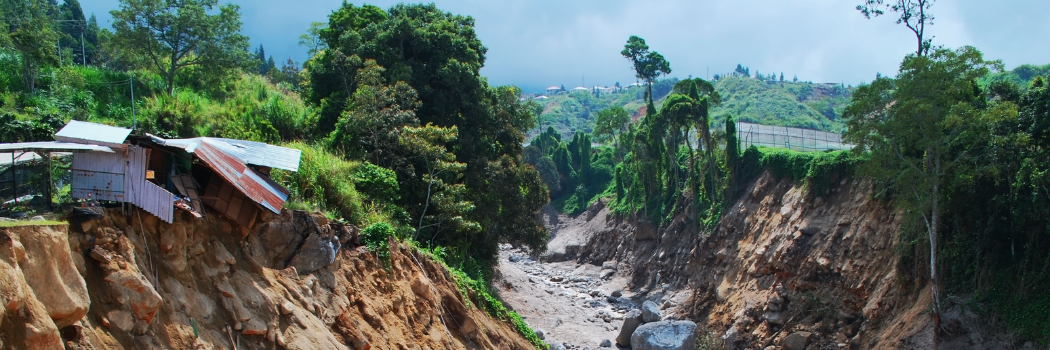The economic consequences of fatal landslides

By Dr Martin Robson, August 2023
.png)
The growing body of research on the impacts of climate change highlights the increased frequency of extreme weather events, from which no country is immune. The Intergovernmental Panel on Climate Change recently pointed out that the increase in risks associated with extreme weather preferentially impacts disadvantaged people, not just in developing countries. Indeed, the developed world isn’t immune from environmental tragedies, as shown by the rainfall-induced landslide on the Italian island of Ischia, which resulted in the deaths of eleven people in November 2022. Many of the physical effects of climate change are well documented, but the impacts on human systems are more difficult to capture. In a study of natural disasters, I, along with my co-authors Dr Roxana Radulescu, Newcastle University Business School and Professor Dave Petley, Vice Chancellor, Hull University, focus on the impact of landslides, which have been reliably linked to climate change through their dependence on the frequency and intensity of rainfall. We examine the factors that determine the occurrence of landslides and on the subsequent number of fatalities, and investigate their effect on a country’s real income, as measured by the level of Gross Domestic Product (GDP) per capita.
We use data from the Global Fatal Landslides Database (GFLD), which gives us a much larger dataset than has been used before. For example, over the period 2004-2017 this dataset captured four times as many fatalities compared to the number recorded in a previously established but less rigorous database. This is an improved quantification and therefore a greater appreciation of the true impact of landslides.
The global distribution of fatal landslides shows a strongly heterogeneous pattern, with clusters being evident in a number of locations. These include China, the southern edge of the Himalayas (e.g. northern India and Nepal), the Philippines, Indonesia – most notably in and around the island of Java – and in a chain that follows the mountains of Central and South America. In contrast, less serious landslides – measured in terms of the number of landslides and the number of fatalities – are found in Oceania and Europe.
In a series of regression models, we show that geographic, economic and institutional variables have an important role in causing fatal landslides. Amongst the geographic variables, the most important is the level of rainfall. Changes in population density are also significant. Given the increase in population predicted over the next eight decades, we predict that this alone will add around 20% to landslide fatalities due the increase in population density.
However, the effects of geography can be mitigated by economic and institutional factors. Rich countries, for example, have fewer fatalities for a given geography because they tend to have better quality of regulation, less corruption and better infrastructure. The effect of a 10% increase in real GDP per capita is to reduce the number of fatalities by 3%. This result is in line with evidence obtained from other disaster databases. We also find that spending an extra percentage point of GDP on government consumption reduces fatalities by 6%. More external openness also reduces the number of casualties, with a ten-percentage point increase in openness reducing the number of fatalities by 19%. Not surprisingly, the presence of internal conflict serves to increase the number of fatalities. There’s no evidence, however, that autocratic regimes can reduce the death toll from this type of natural disaster.
Loss of life due to landslides is undesirable in itself. However, after controlling for other growth determinants, we find the presence of fatal landslides increases growth of GDP per capita by between 0.5 and 1.2 percentage points. Growth also depends positively on the severity of landslides as measured by the loss of life and on the number of landslides taking place each year. This positive effect looks surprising at first, but it’s not out of line with other studies that examine the relationship between, for example, floods and real GDP per capita.
In general, previous research has produced mixed results for various types of natural disaster, but this is one of the few studies that looks in particular at the effect of landslides. Global warming sets the stage for more extreme levels of precipitation, and with this the likelihood of landslides increasing across the globe, as the recent event on the island of Ischia attests. Our study underlines the importance of public policy in reducing the death toll inflicted by natural disasters. While richer countries have more resources to address the problem, developing countries can also decrease the impact by opening their economies and minimising conflict. These policies don’t reduce or reverse global warming, but they can combat its most damaging effects in the short term.
More information on Dr Martin Robson's research interests.

/prod01/channel_3/business/media/durham-university-business-school/impact/Home-Header-or-Footer-(10).png)